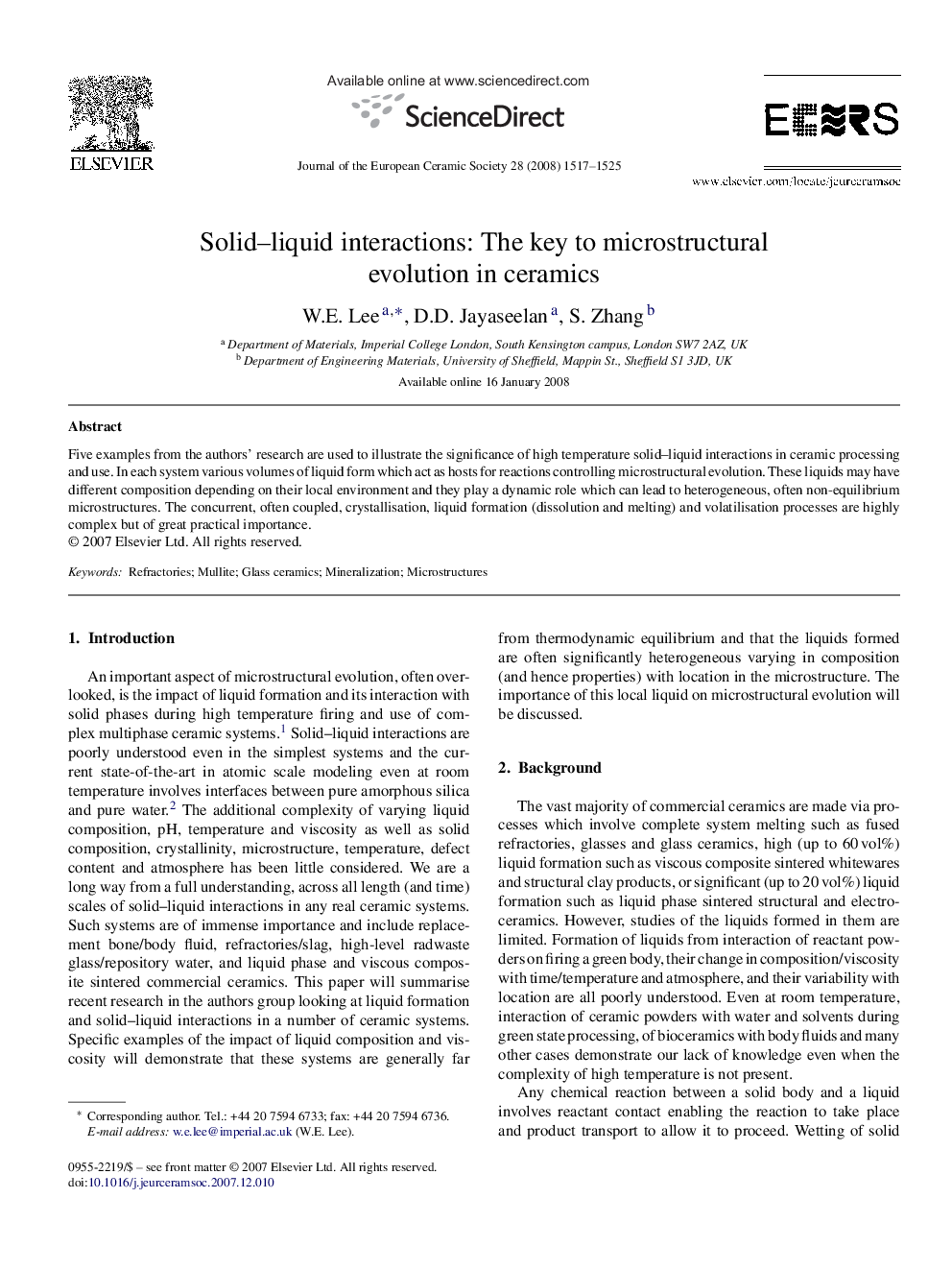| Article ID | Journal | Published Year | Pages | File Type |
|---|---|---|---|---|
| 1476753 | Journal of the European Ceramic Society | 2008 | 9 Pages |
Abstract
Five examples from the authors’ research are used to illustrate the significance of high temperature solid–liquid interactions in ceramic processing and use. In each system various volumes of liquid form which act as hosts for reactions controlling microstructural evolution. These liquids may have different composition depending on their local environment and they play a dynamic role which can lead to heterogeneous, often non-equilibrium microstructures. The concurrent, often coupled, crystallisation, liquid formation (dissolution and melting) and volatilisation processes are highly complex but of great practical importance.
Related Topics
Physical Sciences and Engineering
Materials Science
Ceramics and Composites
Authors
W.E. Lee, D.D. Jayaseelan, S. Zhang,
